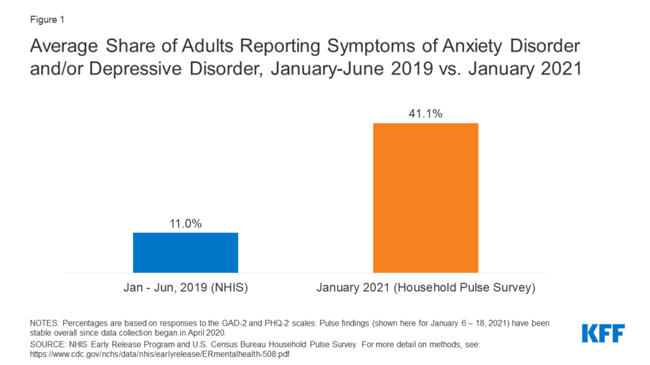In current times, employee wellness has become paramount for all organizations. We are living in a very challenging reality and it is imperative for the corporate world to operate from a place of kindness and empathy towards all its human assets to help overcome these challenges. After all, people are the driving force behind an organizations’ survival, growth and success. It is essential for employers to follow a wellness ecosystem at the workplace to enable better health and quality of life for all employees.
There must be equal focus on their physical, mental, spiritual as well as financial wellness. This, in turn, fosters higher productivity levels, increased creativity and an energetic drive to accomplish one’s goals. We can all agree that the need of the hour is a balanced wellness ecosystem where Human Resources (HR) can step in and create lasting value. Employees seem to be facing obstacles from every aspect of life which is impacting their productivity levels and happiness, resulting in burnouts. Some of the major pressures are:
- Adopting the work-from-home model without home infrastructure being equipped for it
- Employees working late night shifts from home, and finding it difficult if they live with family
- The fear of the pandemic
- Comparison with their peer group at other organizations
- Uncertainty around job security
- Unpleasant news all around them specially over social media
These pressure points may bring to the surface underlying mental conditions. It may aggravate stress and manifest in the form of unhealthy coping mechanisms such as misplaced anger or substance abuse. Stress contributes to the development of numerous physical ailments such as migraines, irritable bowel syndrome, high blood sugar, Alzheimer’s disease, etc and is the key trigger point in a host of medical conditions. 
What can organizations do to overcome these issues? A survey from June 2020 titled ‘Reopening the Workplace: Health, Safety and Wellbeing Employer Survey’ reported that increasing investment in mental health services would be a top priority for 47% of employers in the next six months. Two-thirds of the participants agreed that access to high-quality mental health solutions should be their priority. Currently, a lot of the health ecosystem is focused on the pandemic, and this creates a tremendous amount of pressure to cope with the emergency, and divert resources away from mental health initiatives and therapists. The organization and HR’s effort to manage business and people in ‘a VUCA world’ is gaining more importance than ever. VUCA stands for Volatility, Uncertainty, Complexity, and Ambiguity.
A study by Columbia University formulated nine ways an organization could navigate through VUCA; flexibility, speed, experimenting, performance risk-taking, interpersonal risk-taking, collaborating, information gathering, feedback-seeking, and reflecting. The current external environment calls for information gathering, reflecting, flexibility and interpersonal risk-taking both from employees as well as the organization. There is an overwhelming amount of negative news all over social media and hard-to-digest information being passed on to us daily. Here are a few ways one could cope with the same:
- Limit the amount of time you spend looking at the news to 15 minutes a day.
- Meditate, practice yoga and physical exercises for at least 30 minutes daily.
- Ensure you get enough sleep.
- Maintain a healthy diet.
- Overall, set a healthy routine.
At Coforge, we have ensured that we take the right measures to keep our employees feeling their best personally and professionally. Before the pandemic, we kept our employees engaged with regular team bonding and personal growth-related exercises such as sports events, carnivals, personal defense classes, and more. When the world began facing a pandemic and went virtual, so did our employee engagement. We brought on initiatives such as the formation of a COVID core committee, communicated awareness on the situation daily with employees, carried out proper sanitization and fumigation at our offices, initiated the ‘Live Well’ program catering to employee wellness.
In addition to these, we offered virtual training, provided rewards and recognition to top performers during the pandemic and conducted virtual engagement activities to maintain employee morale during isolation. Currently, here are the initiatives we are carrying out regularly:
- Regular communication from leadership & HR connects
- 24x7 COVID Helpline exclusive to Coforge BPS employees
- Tie up with 24x7 online doctor-support enabling employees and their families timely and round the clock access to medical advice
- Confidential telephonic counselling to adapt to uncertainty
- Free COVID vaccinations to all employees
- Set up of oxygen concentrators for employees at office locations
- Live webinar with a renowned doctor educating all employees on how to stay healthy
- Tie up with level 1 COVID Care Facilities for the quarantine needs of employees and their immediate families
- Providing free masks and touch-less sanitizer dispensers
Communication is key in a VUCA situation. It is important for leaders and people managers to communicate with compassion, empathy and support to employees as well as each other. They must regularly check in with employees on a personal level and ensure that their tasks match their mental and emotional capabilities. The organization and its leaders should lead by example and focus on carrying a healthy work culture into the work from home model.
A few tips - maintain boundaries by ensuring that employees get regular breaks, end meetings early or allow enough buffer time between each to make way for short water or bio breaks, respecting the employees’ personal environment and distractions, accepting the presence and coexistence of their families at home and respecting work cutoff times to enable employees to wind down and carry on with their personal lives as well. Employees make an organization. If we cater to their wellbeing, we, in turn, cater to the success of the organization.